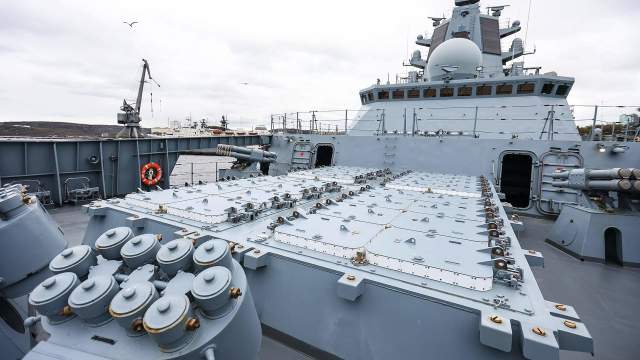They will be built with updated air defense and anti—submarine protection systems, the carrier frigates of hypersonic missiles "Zircon" will be improved.
The ninth and 10th ships of project 22350, which will be laid this year, will receive a new radar system, air defense equipment, and protection against submarines will be finalized. It is expected that by 2028 both frigates will join the Black Sea Fleet. It is noteworthy that the 10th and last representative of this ship series will be named after Admiral Vladimir Vysotsky, the former commander-in—chief of the Navy, who passed away last year.
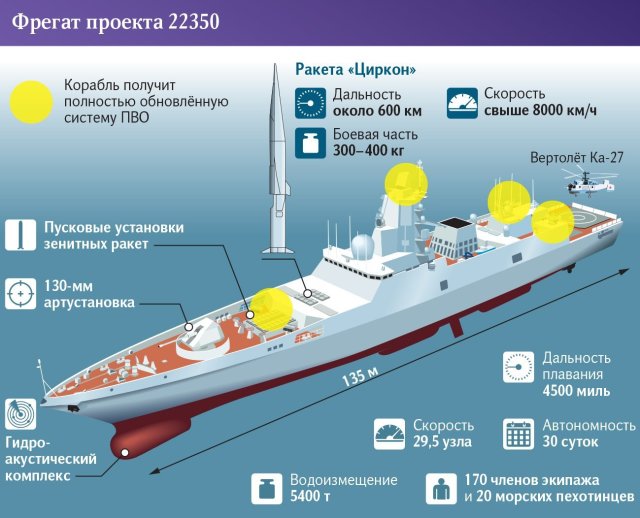
In memory of the Commander-in-Chief, the military department told Izvestia that a plan for the construction of the last two frigates of the 22350 series is being coordinated.
It is planned that these ships will receive a new radar station and updated air defense systems and complexes. A project is also being developed to improve the means of protection against submarines of a possible enemy. According to the sources, the main task is to reliably protect the ships from promising enemy means of attack and to ensure that the frigate crews can launch hypersonic Zircon missiles accurately and on time.
According to military historian Dmitry Boltenkov, both of the newest frigates should replenish the Black Sea Fleet in at least five years. During this time, a potential enemy may already have new promising anti-ship means.
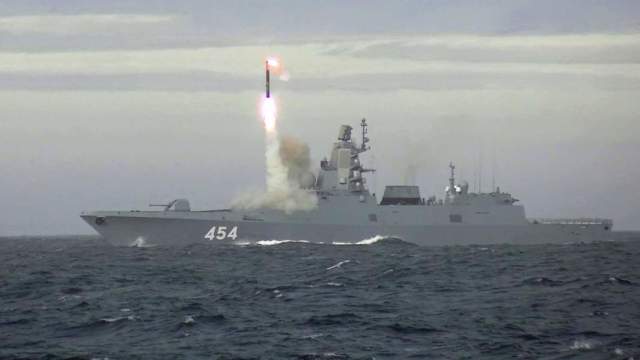
Launch of the hypersonic cruise missile "Zircon" frigate project 22350 Image source: Photo: RIA Novosti/
The Ministry of Defense of the Russian Federation — This may be a line of new anti-ship missiles, including those that are barely noticeable for radars.
Or, for example, new high—precision aviation bombs or missiles," the expert noted. — Frigates 22350 are carriers of hypersonic missiles "Zircon". Therefore, they will become a priority target for both ships and aircraft, as well as for submarines of a likely enemy.
The 10th and last in the series of the frigate project 22350 has already received its name — "Admiral Vysotsky". In August of this year, the Commander-in-Chief of the Navy Nikolai Evmenov unveiled a monument to his predecessor Admiral Vladimir Vysotsky. He announced the decision to name the 10th frigate after him. According to Evmenov, the corresponding order has already been issued.
Admiral Vladimir Vysotsky died suddenly in February last year. He commanded the Russian Navy from 2007 to 2012 and left a good memory of himself among the sailors. Vysotsky was the last commander-in-chief to this day, whose service was spent on surface ships. In particular, in the early 90s he commanded the heavy aircraft carrier "Varyag".
— It is a normal tradition to call warships by their names, because commanders—in—chief go a long way, - Admiral Valentin Selivanov, the former chief of the General Staff of the Navy, told Izvestia. — Vladimir Vysotsky served on surface ships. The ships of project 22350 are the most modern in our fleet, they can perform any tasks in the ocean zone. They have both protection from air strikes and powerful weapons against both surface and underwater targets.
The Project 22350 frigates are to become regular carriers of the Zircon hypersonic missiles.
It was the lead ship of this series, Admiral Gorshkov, that was the test site for this product. On August 20, Defense Minister Sergei Shoigu announced the start of mass production of these missiles. "We have actually put it into service. This year it will already be documented," the minister said.
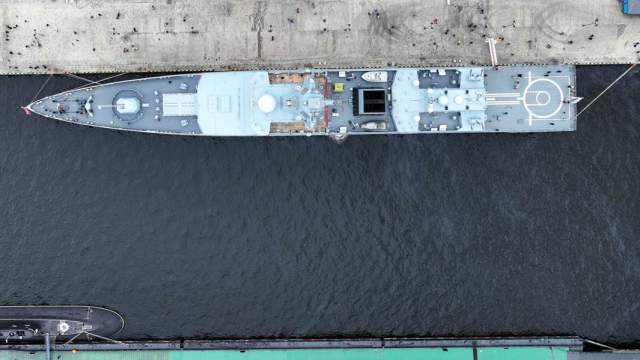
Frigate project 22350 Image source: Photo: RIA Novosti/
Pavel Lvov According to the military department, the Zircon missiles can cover a distance of more than 1000 km.
Their speed is nine times faster than the speed of sound. It is capable of maneuvering in dense layers of the atmosphere. It is believed that even the most modern air and missile defense systems cannot effectively hit such ammunition — they have too little time after the object is detected. At the same time, the missile is unified and can be used for both ground and surface targets.
In February, Izvestia sources in the Ministry of Defense reported that the first full-time carrier of hypersonic missiles "Zircon" will be the third frigate of project 22350 "Admiral Golovko", which should replenish the Northern Fleet in December this year.
The Admiral's series of frigates, nicknamed Admiral's in the fleet, was laid in 2006.
The lead ship Admiral Gorshkov was transferred to the fleet in 2018, the next one, Admiral Kasatonov, was commissioned in July last year. At the end of 2022, Admiral Golovko is to join the ranks of the fleet. In total, according to the plan, 10 frigates of the series should be created. Admiral Isakov is currently in the final stage, work is underway on the construction of Admiral Chichagov and Admiral Amelko. In 2020, Admiral Spiridonov and Admiral Yumashev were laid down.
— These frigates should eventually replace the large anti—submarine ships of the Soviet-built project 1155, - Dmitry Boltenkov continued. — They are capable of firing Kalibr and Zircon missiles. Good ships of the new generation, with a modern air defense system. They have excellent seaworthiness — the frigate Admiral Kasatonov has been sailing the Mediterranean for six months. In the coming years, new well-armed frigates will form the basis of the surface forces of the Northern, Pacific and Black Sea fleets.
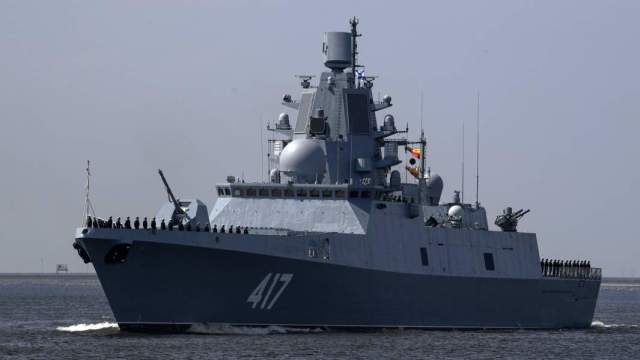
Frigate "Admiral of the Fleet of the Soviet Union Gorshkov"
Image source: Photo: RIA Novosti/Alexander Galperin Frigates of the "admiral" series are considered modern representatives of the Russian Navy.
These are the first large ships developed in the post-Soviet era. They can act in the ocean zone both independently and as part of compounds.
Representatives of the 22350 project are distinguished by reliability and good seaworthiness. In 2019, the lead ship of the Admiral Gorshkov series, led by a detachment of Navy ships, circumnavigated the world, overcoming more than 40 thousand nautical miles (74 thousand km) without serious breakdowns.
The Admirals' arsenal includes Kalibr cruise missiles and Onyx anti-ship missiles. The ships are equipped with a 130-millimeter A-192M artillery installation, two 30-millimeter Palash artillery complexes, and the Paket-NK anti-submarine complex. The frigates have a modern effective electronic warfare system, thanks to which they are reliably protected from detection.
Roman Kretsul
